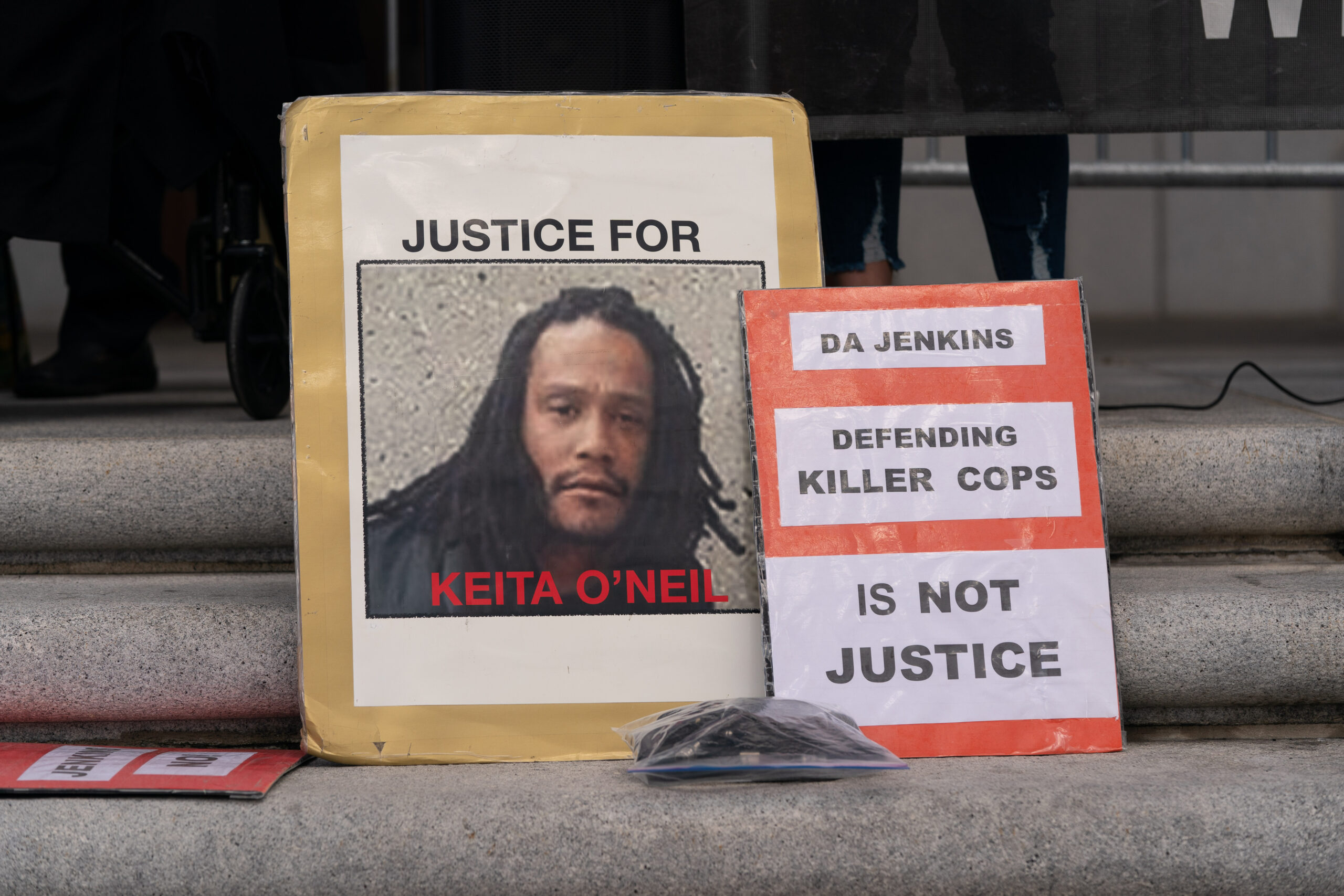Weeks before fatally shooting someone in the line of duty in 2017, rookie cop Christopher Samayoa was shot in the head with a paintball in a training exercise at police academy that his defense team argued led up to the deadly encounter.
A kind of muscle memory from that paintball exercise could legally be used as a defense, which was one reason District Attorney Brooke Jenkins decided to drop the manslaughter charge against Samayoa, whose case was the first of its kind against a police officer who killed someone while on duty.
But when he spoke to investigators a day after the shooting, he made no mention of the paintball exercise, according to transcripts obtained by The Standard. Samayoa did not reference any one training that prepared him for the scenario when asked by investigators.
The transcripts now raise questions about Jenkins’s decision to drop the case, said Brian Ford, the attorney for the family of the man who was killed, Keita O’Neil. If the training primed Samayoa to shoot O’Neil, then why didn’t he bring that up while it was still fresh on his mind, Ford asked.
“Samayoa’s own statement to Internal Affairs contradicts Brooke Jenkins’ representation of a training he underwent affecting his mental state at the time of the shooting,” said Ford.
That interview, Ford said, is yet another example of the special treatment Samayoa has received and cements the appearance that this was a sham dismissal.
The interview—part of the investigation required whenever an officer kills someone in the line of duty—marked Samayoa’s first official account of the shooting. Transcripts from that first account show that Samoyoa told investigators he feared for his life when he saw O’Neil running toward him from a parked van.
So, the officer said, he opened fire while the patrol car was still pulling up behind what officers say was a stolen van.
“As soon as I saw him running out, it looked like he was, you know, running and about to grab for a weapon in the small of his back, which, based off of my training and experience, the common place that, uh, you know, violent felons conceal weapons,” Samayoa said, according to the transcripts. “I was about to be shot and killed. And I-I feel [sic] for my life. I-I-I feel like I was being ambushed.”
Samayoa said his police training informed him that carjackings are violent crimes.
The training Samayoa took part in, which included a traffic stop scenario similar to the shooting of O’Neil, included two men getting out of a stopped car and opening fire on police. In that training with paintballs, Samayoa was hit in the head, according to the DA.
In the Dec. 2, 2017, interview with police and DA investigators, Samayoa explained his thinking and actions before he shot one round into O’Neil’s neck.
“Is there one example of training that you would rely on mentally because, uh, to prepare yourself for a situation like this?” an investigator asked.
Samayoa responded in the negative, saying there were so many trainings and that he couldn’t recall any that mirrored the events of the day before.
“There’s not one. There’s—there’s too many. There’s several. Like I said, there wouldn’t be one example,” Samayoa said.
The officer told interviewers he recalled undergoing training similar to the fatal shooting—but said he couldn’t remember the specifics, like when it took place or details of the curriculum.
“Are there any scenarios that were similar to what happened yesterday?” a police officer in the room asked.
“Um, there was—there was a—there was—I think there was one,” Samayoa replied. “I wouldn’t say similar, but there was.”
Last month, Jenkins dismissed the Samayoa case after accusing her predecessor Chesa Boudin of filing it for political reasons—and because she saw Samayoa’s training as legal grounds for the defense. And the transcripts will be some of the many records the California Attorney General’s Office will review as it decides whether to take over the prosecution.
